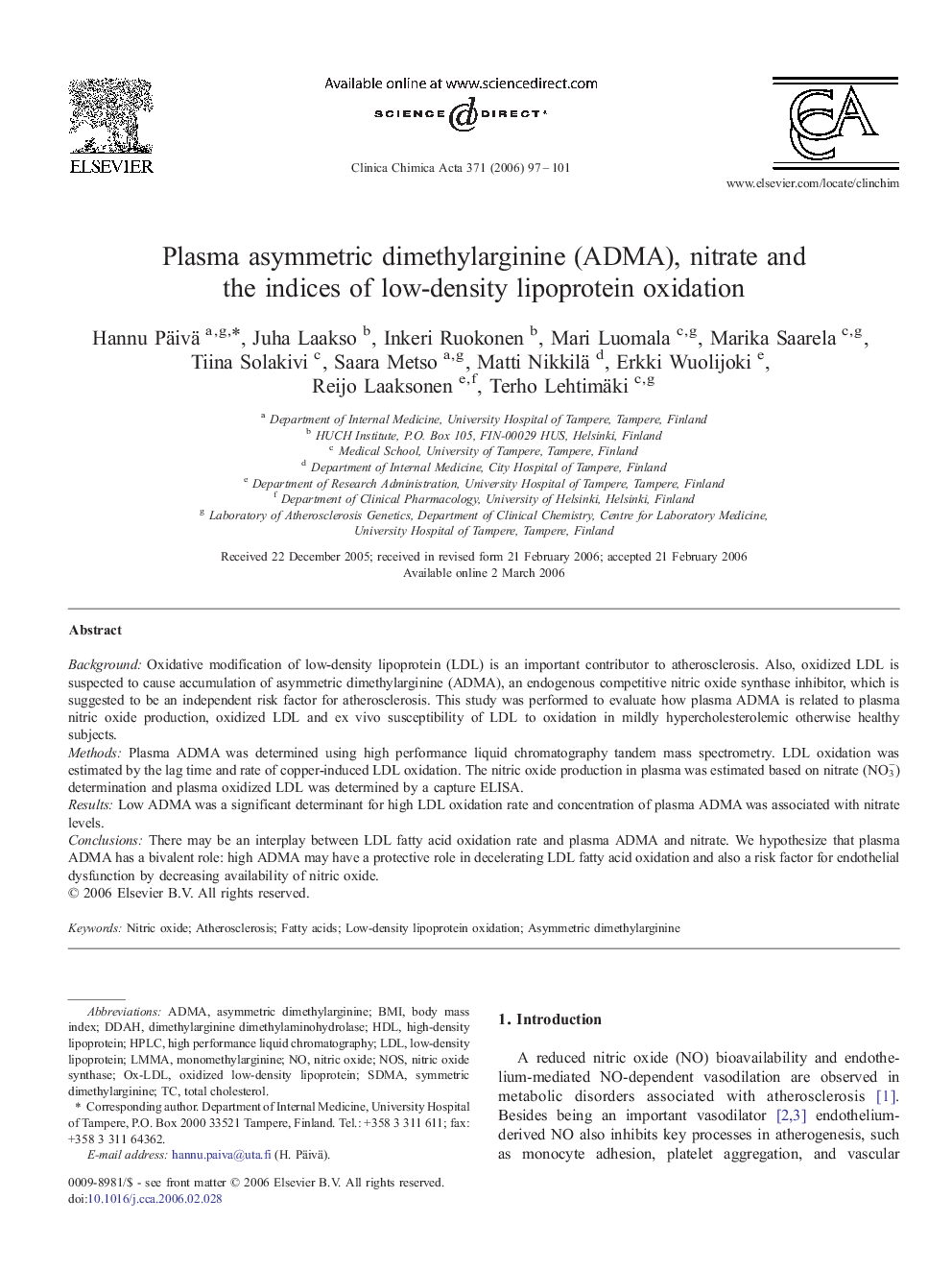| Article ID | Journal | Published Year | Pages | File Type |
|---|---|---|---|---|
| 1967817 | Clinica Chimica Acta | 2006 | 5 Pages |
BackgroundOxidative modification of low-density lipoprotein (LDL) is an important contributor to atherosclerosis. Also, oxidized LDL is suspected to cause accumulation of asymmetric dimethylarginine (ADMA), an endogenous competitive nitric oxide synthase inhibitor, which is suggested to be an independent risk factor for atherosclerosis. This study was performed to evaluate how plasma ADMA is related to plasma nitric oxide production, oxidized LDL and ex vivo susceptibility of LDL to oxidation in mildly hypercholesterolemic otherwise healthy subjects.MethodsPlasma ADMA was determined using high performance liquid chromatography tandem mass spectrometry. LDL oxidation was estimated by the lag time and rate of copper-induced LDL oxidation. The nitric oxide production in plasma was estimated based on nitrate (NO3−) determination and plasma oxidized LDL was determined by a capture ELISA.ResultsLow ADMA was a significant determinant for high LDL oxidation rate and concentration of plasma ADMA was associated with nitrate levels.ConclusionsThere may be an interplay between LDL fatty acid oxidation rate and plasma ADMA and nitrate. We hypothesize that plasma ADMA has a bivalent role: high ADMA may have a protective role in decelerating LDL fatty acid oxidation and also a risk factor for endothelial dysfunction by decreasing availability of nitric oxide.
